Paul's Conservation Minnesota Outlook for the Twin Cities and all of Minnesota:
TODAY: Sunny, lukewarm breeze. Winds: E 10-15. High: near 70
WEDNESDAY NIGHT: Partly cloudy and milder. Low: 53
THURSDAY: Partly sunny - probably dry. High: 71
FRIDAY: Clouds increase. Showers, heavier PM T-storms likely late. Low: 58. High: 73
SATURDAY: Sticky. Scattered showers and T-storms, some heavy. Winds: SE 10. Low: 61. High: 75
SATURDAY NIGHT: More showers and storms - still humid. Low: 62
SUNDAY: Unsettled with intervals of sun - another passing shower or two. Winds: W 10. High: 73
MONDAY: Damp start, slow clearing. Low: 54. High: 69
TUESDAY: Plenty of sun, nice again. Low: 56. High: 75
68 F. high in the Twin Cities at 3:25 pm.
71 F. average high for May 17 in the Twin Cities.
7.6 mph: average wind speed on Tuesday in the metro area.
1.42" of (showery) rain predicted from Friday through Monday of next week for the Twin Cities. (GFS model).
 Weekend Trends
Weekend Trends. Best chance of rain showers (and possible T-storms) should come Friday night into Saturday. A surge of drier air may punch a few sunny holes over Minnesota Sunday as winds shift around to a more westerly direction. It's early, but right now I suspect Sunday will be drier and brighter than Saturday.
Moon-Set. This is one of 16 "moon-sets" visible onboard the Space Shuttle Endeavor. Thanks to Astro-Ron and
twitpic for sharing this awesome sight!
"
I don't know any other way of saying this, but politicians shouldn't be allowed around questions of science. This stuff is too serious to leave in the hands of people beholden to high-roller donors who are worried they will lose profits if the government acts decisively on established science." - Don Shelby, from an article below.
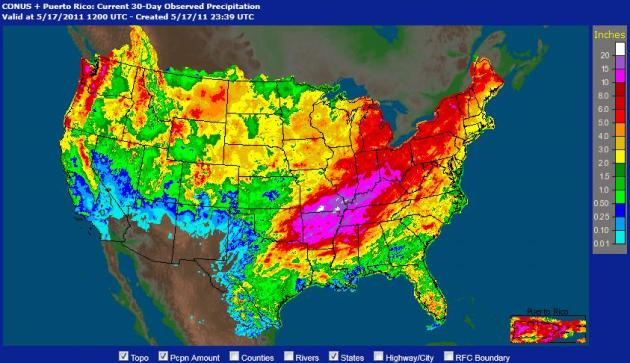 30 Day Rainfall
30 Day Rainfall. Much of Minnesota has seen 2-4" of rain since mid April, lesser amounts over the Red River Valley. Chec out the amounts from Arkansas and southern Missouri into the Ohio River Valley - as much as 15-20"+ of rain. That's 4-5 months worth of rain in just the last 30 days. Rainfall data courtesy of
NOAA.
 Rainfall Departure Since April 1
Rainfall Departure Since April 1. The last 6 weeks have brought sufficient rains across much of Minnesota, but a dry pocket has developed in west central Minnesota. I doubt we'll have to worry about widespread drought conditions this summer, based on the way weather patterns are unfolding (a southward bias to the jet stream), but we'll have to watch this. Map courtesy of the
Minnesota DNR.
Outlook: 70s And Waves of Thunder. The models are printing out .85 to 1.2" of rain by Sunday night, coming in waves. This should NOT be a solid, steady, all-day rain event. The best chance of showers/T-storms may come Friday night, a few more scattered T-storms Saturday afternoon/evening, yet another round of (mostly rain showers) Sunday PM hours. The best odds of seeing a little lukewarm sun? Saturday morning and midday.
European Outlook. Based on ECMWF data Saturday appears to be the wetter day of the weekend. I seriously doubt we'll see bright sunshine most of the day Sunday, a cold swirl of air sloshing overhead will keep our skies unstable and showery, with the best chance of showers and T-storms afternoon/evening hours. At least temperatures will be mild enough for the lake: highs in the 70s.
I'm Just The Messenger. Look, I don't put much stock in these long-range, multi-month weather "trends", semi-educated guesses about what our weather will be doing months from now. CPC, the
Climate Prediction Center, is predicting a continued bias toward cooler, wetter weather for the northern tier states. This may be a symptom of a lingering La Nina, which tends to keep the core of the jet stream farther south than usual. That would favor a fast-moving, stormier pattern for Minnesota, fewer 90 degree airmasses penetrating this far north. We'll see how things unfold, but in my gut (nausea?) I suspect we'll enjoy (?) a cooler, wetter summer than average, with a significant number of severe storm outbreaks. The risk of drought is just about zero, in my humble estimation.
Northeast Update: Tropical-Like Rains Unfold.
AccuWeather tracks the same storm that soaked us last Saturday, now stalled over the eastern seaboard, producing copious rains, severe thunderstorms, and enough wind and wave action for coastal beach erosion. Ironically this same storm is forecast to "retrograde" westward, showers approaching from the east, from Wisconsin, as early as Thursday. Odd: "
Drenching rain will inundate portions of the Northeast through at least Thursday, with rainfall totals mimicking that of a tropical storm; this has elevated flood fears in the region. The rain-making storm will be slow to move through Thursday. Counter-clockwise winds around the storm will pinwheel moisture from the northern Caribbean and Bahamas into it, aiding in the heavy rain threat. "It's behaving somewhat like a tropical storm in terms of heavy rain, but without an actual tropical storm," said Chief Meteorologist Elliot Abrams."
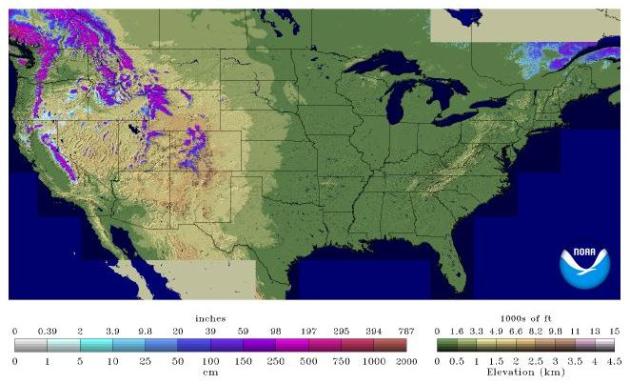 A Little June Skiing Anyone?
A Little June Skiing Anyone? Amazingly there is still 50-80" of snow on the ground over the Sierra Nevada range, the Cascades and Olympic Range out west. The higher elevations of Colorado, Utah and Wyoming are reporting 20-40" snow. Click
here to see the latest from NOAA's National Snow Analyses.
3 Ways To Survive The Storm. Action3news.com in Omaha reviews
severe storm tips with some good information: "
Omaha, NE - Severe storm season is just beginning to roar in Nebraska. We've already seen destructive damaging tornados this spring, in Mapleton and Lenox, Iowa. During the last week of April there were more than 300 tornadoes reported to weather officials, which set a record. There are steps you can take right now to make sure your family survives what could be a very active storm season. Lyca Loy thinks twice when it comes to severe weather. "Before the tornado the siren would go off and I'd laugh and I'd say, "Tornadoes you know it's not important unless you live in a trailer park. They only hit trailer parks, churches and people you don't know,' Loy laughs while rolling her eyes and continues, "and me." It took a powerful tornado seven years ago to change that for Lyca. The Loy family is one of many in the small town of Hallam, Nebraska to lose just about everything in a tornado. It's a night Hallam residents will never forget, their town was leveled by a 2.5 mile wide twister. Minutes after the menace roared through that night emergency lights glowed in puddles of rain water while lightning revealed the damage left behind. Trees were splintered. Homes tangled. Cars twisted in trees. Debris littered the countryside for miles. Looking at damage pictures Lyca admits, she didn't pay attention to the early weather watches and warnings that evening. "I heard a big bang and the next thing I know I'm flying down the stairs and across the room," Loy recalled."
Morganza's Spillway Opens In Louisiana. NASA's Earth Observatory has
more details: "
On May 14, 2011, the U.S. Army Corps of Engineers opened the Morganza Spillway in an attempt to ease flooding along the Mississippi River in Louisiana. The decision was made to protect the heavily populated areas and infrastructure around the ports of Baton Rouge and New Orleans. The decision is not without cost, however, to the thousands of people who are likely to lose homes and farms within the flood plain downstream. On May 15, the Advanced Land Imager (ALI) on NASA’s Earth Observing-1 (EO-1) satellite captured this natural-color image (top) of the Morganza Floodway. The image was acquired at 11:20 a.m. Central Daylight Time, one day after the spillway was partially opened. The lower photo was taken on May 14 by the Army Corps, several hours after water began streaming onto the floodway. The flood control structure, or spillway, includes 125 gates, 11 of which had been opened as of noon on May 16. In the satellite image, the white pixels near the spillway are whitewater churned up by the flow through the gates; the downloadable large image shows this in much finer detail. Square and quadrilateral shapes on the landscape show areas that were cleared for farming or perhaps shaped for flood control earthworks."
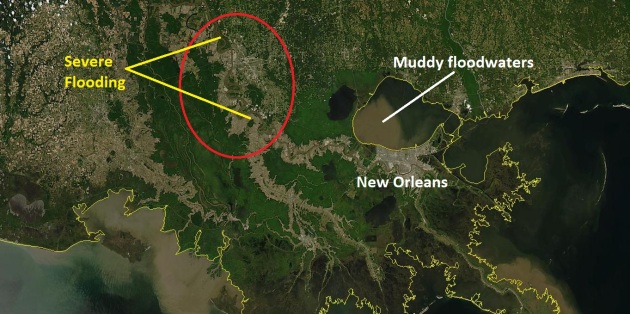 Flood From Space
Flood From Space. NASA's "
Aqua" satellite shows a swollen Mississippi River inundating many parishes across Louisiana, muddy water emptying into Lake Ponchartrain.
Mississippi River Evacuees Move Into Katrina Enclave, Canadaville. Huffington Post has a
story about the flood of refugees taking advantage of housing made available for Katrina survivors in 2005. History repeats itself, sadly: "
SIMMESPORT, La. — A farming community built for evacuees of Hurricane Katrina has become a haven for families driven from their homes by river flooding that has hit states from Arkansas to Louisiana. Twenty-six families have moved into the enclave, informally known as Canadaville, because their towns were threatened by flooding from the Mississippi River and smaller rivers that spring from it. The haven created by a Canadian industrialist had a onetime population of around 200 hurricane-displaced residents, but it had dwindled to just a handful by the time people from nearby towns began looking for a place to wait out the flood. Tonya Nelson, 39, one of the few Katrina evacuees still there, said she recognized the look on their faces. "I can understand what they're going through because I've been through it myself," she said. The Mississippi River is swollen by snow melt and heavy spring rains. To take pressure off levees surrounding heavily populated New Orleans and Baton Rouge, the Army Corps of Engineers opened the key Morganza Spillway, choosing to flood more rural areas with fewer homes. Some have flocked to the 900-acre development that was officially named Magnaville when it opened a few months after Katrina because it was created by the head of Canadian auto parts maker Magna International. Hurricane-displaced families could live rent-free if they passed a background check and followed the rules."
Coast Guard Reopens Part Of The Mississippi River. USA Today has the
very latest: "
JACKSON, Miss. (AP) — The Coast Guard reopened the swollen Mississippi River north of New Orleans on Tuesday, allowing cargo vessels on the nation's busiest waterway to pass one-by-one in the latest effort to reduce pressure from rising floodwaters. A 15-mile stretch at Natchez, Miss., was closed entirely earlier in the day, blocking vessels heading toward the Gulf of Mexico and others trying to return north after dropping off their freight. Had the channel remained closed, it could've brought traffic to a standstill up and down the river, which moves about 500 million tons of cargo each year. That sort of interruption could've cost the U.S. economy hundreds of millions of dollars for every day of idled barges carrying coal, timber, iron, steel and more than half of America's grain exports. Coast Guard officials said wakes generated by passing barge traffic could increase the strain on levees designed to hold back the river. Authorities were also concerned that barges could not operate safely in the flooded river, which has risen to the level of some docks and submerged others."
Epic Flooding. Forget "historic", the National Weather Service is now calling
flooding in Natchez, Mississippi "epic". The old record flood stage was 58 feet, set in on February 21, 1937. The river is close to 62 feet, expected to crest Saturday at 63 feet, nearly 5 feet above the previous (historic) crest. Yes, epic pretty much sums it up.
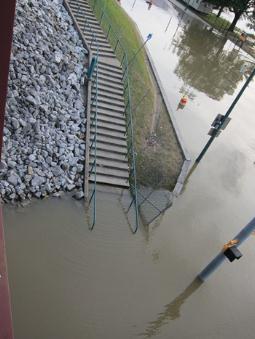 When The Levee Doesn't Break - What's Wrong With The Media's Coverage?
When The Levee Doesn't Break - What's Wrong With The Media's Coverage? Media exaggerating the impact of flooding in Memphis? I find that hard to believe.
Forbes has the story behind the story: "
First off, I’d like to send my condolences to the people of Memphis. Thanks to the weather, they have suffered emotionally and financially in the past few weeks. Actually that’s not really true. It would be more accurate to say they have suffered emotionally and financially in the past few weeks thanks to the weather media. Accuracy is the key word here, and ironically, in an entire industry that should be built on accuracy, weather folks have little regard for the truth. I was in Memphis last Wednesday, May 11, the day that weather watching fanatics, and apparently there are enough of them to fuel an entire industry in weather-related hyperbole, will recognize as the day the Mississippi River crested in Memphis (capping a weeklong media countdown). For days leading up to this non-event, we were subjected to a non-stop series of television weather “reporters” in hip waders trying to outdo one another by plunging deeper and deeper into the waters of flooded downtown Memphis for their reports. We watched dramatically as they descended the now all too familiar staircase, its invisible bottom steps (inches, feet, miles?) lost to the Mississippi, and endlessly reminded us that “I am standing in downtown Memphis.” While technically true, there was one big problem that was not being reported: downtown Memphis never flooded."
Property/Casualty Insurers Take Hit In Q1 As Hurricane Season Approaches. Here's the
story from insurancejournal.com: "
The U.S. property/casualty (P/C) industry took a beating from record first quarter 2011 catastrophe losses, and recent earnings announcements from global reinsurers illustrate the damage those losses did to earnings and operating results. Insured losses from winter storms and severe thunderstorm and tornado events through April– including one outbreak that could represent the industry’s costliest ever — already are pressuring operating results just before what has been forecast to be an active Atlantic hurricane season. How insurers manage catastrophe programs for the remainder of the year will be influenced by pricing and availability of property catastrophe coverage, as well as emerging views of loss exposure and whether the rising frequency and severity of storms seen in recent years is now the norm. In a new report, A.M. Best Co. says that U.S. primary insurers could face higher reinsurance costs at the upcoming July 1 renewals, given first quarter 2011 catastrophe losses sustained by global reinsurers and the release of a new version of Risk Management Solutions Inc.¹s wind model, as companies evaluate the need for additional reinsurance protection. Forecasters predict three to five intense hurricanes in the Atlantic basin, above the long-term average of two to three intense storms. One forecaster notes that the United States has not had a three year stretch without a hurricane landfall since the 1860s."
 Could The Internet Spell The End Of Snow Days?
Could The Internet Spell The End Of Snow Days? Uh oh. I don't like the sound of this - sounds pretty un-American to me. USA Today and the AP has the
story: "
PARKVILLE, Mo. (AP) — Could the Internet mean the end of snow days? Some schools think so, and they are experimenting with ways for students to do lessons online during bad weather, potentially allowing classes to go on during even the worst blizzard. "Virtual snow days" would help ease pressure on school calendars and offer students more time to learn in the winter before taking standardized tests in the spring. Virtual learning has been widely used by colleges and universities for years. Now it's becoming more common for younger students as teachers and administrators grow comfortable with the technology. But there are obstacles, too, especially for families who can't afford computers or Internet access."
U.S Official: Growing Threat From Solar Storms. As we approach a solar maximum in 2014 the potential for (disruptive) solar storms will increase. AP has the
story: "
GENEVA (AP) -- A senior official at the U.S. National Oceanic and Atmospheric Administration says solar storms pose a growing threat to criticial infrastructure such as satellite communications, navigation systems and electrical transmission equipment. NOAA Assistant Secretary Kathryn Sullivan says the intensity of solar storms is expected to peak in 2013 and countries should prepare for "potentially devastating effects." Solar storms release particles that can temporarily disable or permanently destroy fragile computer circuits."
How Social Media Is Changing Disaster Recovery.
WKRG-TV in Mobile-Pensacola takes a look at how Twitter and Facebook are changing the disaster recovery process in the wake of tornadoes, floods and hurricanes:
"The face of disaster recovery is changing thanks to social media. And, it's never been more important as it was after the deadly tornadoes that tore across Alabama late last month. The face of disaster recovery is changing thanks to social media. And, it's never been more important as it was after the deadly tornadoes that tore across Alabama late last month. As we here on the Gulf Coast know, when a major disaster hits like those tornadoes or Hurricane Katrina, you lose infrastructure and it's hard to communicate. But, in this day and age, almost everyone has a battery operated cell phone. So, when the power goes out, you can still get vital information through social media sites like Facebook and Twitter. We talked with one non-profit group that is utilizing social media to get help to storm victims faster. They're called RecoverTuscaloosa.com. The head of the group is actually with the tourism industry in Tuscaloosa. As soon as the storms hit, he realized there was a great need to get disaster recovery information out as soon as possible."
Sunny Forecast For Station Weathercasters. Funny, my perspective is that some of the true weather veterans (who tend to make more money because they've been around 20-40 years) have been forced out as TV stations slash their bottom lines, leaving behind skelaton staffs of over-worked meteorologists who have to feed multiple media mouths: TV, web, mobile, even local radio stations. It's a daily grind, not the "glamorous" gig most people believe it to be. But as weather becomes increasingly extreme there may be (a little) more job security for TV meteorologists around the nation in the years to come, according to
this story at tvnewscheck.com: "
We’ve spent plenty of time exploring the woeful state of the TV news job market — cutbacks, skimpy contracts and stiff competition for too few jobs. But at least one group has apparently been able to hold its own: meteorologists. According to broadcasters, agents and academics, weathercasters are still able to command competitive salaries, benefits and some measure of job security. “There are, in my opinion, more good jobs in weather than any other aspect of the business,” says Rick Carr, a Denver-based attorney who represents news talent. Even stations in small markets, he says, will go out of their way to secure weathercasters blessed with a knack for accurate forecasting and a telegenic personality. Carr says one of his clients just got the royal treatment when he signed on to become meteorologist of a family-owned station in a small market. The GM of the station flew cross-country to help his new weatherman move his stuff, he says. “There’s no question that in a time when many [TV news] jobs come with a fair degree of uncertainly, the job of TV meteorologist is a better bet than almost any other,” says Bob Papper, a Hofstra University media studies professor. “Part of that is because as TV stations keep expanding news, weather keeps expanding right along with it,” he says. “Every newscast includes weather, every one.” “If you’re not No. 1 in weather, you won’t be dominant in your market,” says Bill Hoffman, Cox Media Group VP and general manager of WSB, the ABC affiliate in Atlanta (DMA 8). “Anchors are important; the everyday content is important,” Hoffman says. “But at the end of the day your meteorological team has got to be the most trusted in the marketplace.”
 CIA Flew Stealth Drones Into Pakistan To Monitor Bin Laden House
CIA Flew Stealth Drones Into Pakistan To Monitor Bin Laden House. The Washington Post does the
reporting: "
The CIA employed sophisticated new stealth drone aircraft to fly dozens of secret missions deep into Pakistani airspace and monitor the compound where Osama bin Laden was killed, current and former U.S. officials said. Using unmanned planes designed to evade radar detection and operate at high altitudes, the agency conducted clandestine flights over the compound for months before the May 2 assault in an effort to capture high-resolution video that satellites could not provide. The aircraft allowed the CIA to glide undetected beyond the boundaries that Pakistan has long imposed on other U.S. drones, including the Predators and Reapers that routinely carry out strikes against militants near the border with Afghanistan. The agency turned to the new stealth aircraft “because they needed to see more about what was going on” than other surveillance platforms allowed, said a former U.S. official familiar with the details of the operation. “It’s not like you can just park a Predator overhead — the Pakistanis would know,” added the former official, who, like others interviewed, spoke on the condition of anonymity, citing the sensitivity of the program."
What Happens When You're Buried At Sea? A gory, grizzly thought, but you wouldn't be the first person to ponder the implications of a watery grave.
Mother Jones has the details: "
Last Monday, at around 11 in the morning local time, Osama Bin Laden's body dropped from the aircraft carrier USS Carl Vinson into the Arabian Sea. According to the Pentagon, the hours-old corpse had been washed and placed in a simple white sheet in accordance with Islamic practice. It was then sealed inside a weighted bag and laid on top of a board, which was tilted until "the body slid off into the sea." Back on land, the controversy surrounding Bin Laden's last splash was just beginning. But beneath the waves, nature was taking its course, quietly and methodically turning the world's most-wanted terrorist into fish food. You could say Osama bin Laden had received the ultimate green burial, courtesy of the United States Navy. Obviously, the decision to consign Bin Laden to the deep was motivated by expedience rather than eco-friendliness. Seafarers from Odysseus to Ahab have long known that there's no better way to quickly be rid of a corpse than to toss it overboard. But only recently has this salty custom been rediscovered as a relatively efficient way to be laid to rest with minimal environmental impact. "I have noticed a great increase in interest in burial at sea," says Ann Rodney, an environmental protection specialist in the New England office of the Environmental Protection Agency's ocean and coastal unit, which oversees burials in American waters. The agency doesn't have hard data on how many Americans choose sea burial, but Rodney suspects the numbers, though small, are growing. "Ten years ago, I might get one or two calls a year about it. Now I get at least one call a week."

 Weather Perfection
Weather Perfection. Tuesday was awe-inspiring, one of the best days of spring. Under a brilliant blue sky the mercury rose into the upper 60s and low 70s statewide, ranging from 68 at St. Cloud and the Twin Cities to 71 at Redwood Falls.
"Severe Clear"
My Doppler radar has turned into a boat anchor, scanning a dry sky over Minnesota, in search of bugs, birds, planes and basketball players. I'm not complaining. We needed this break in the pattern. Lukewarm sun lingers into much of Thursday as a weakening bubble of high pressure stalls nearby. Weather systems are in an odd holding pattern, dominated by an "omega block". If you squint and use your imagination the jet stream pattern vaguely resembles the Greek letter omega; storms "cut off" from the main belt of westerlies, swirling & meandering. On rare occasions storms can "retrograde", wobbling from east to west. The same sloppy storm that unleashed a cold rain here on Saturday stalled out over the east coast - now it shows signs of sloshing west, the meteorological equivalent of "Chuckie". It's coming back for more (torment)!
The big difference: precipitation from Friday through Monday morning should be "convective", showery rains, interrupted by a few hours of sun. Saturday looks unsettled with a few hours of rain - you may stand a better chance of spying a few hours of sunshine on Sunday. Not as nasty as last Saturday was, but not great either. We slowly dry out next Monday - models hinting at a significant warming trend the latter half of next week. We're due for some 80s. Right now the GFS doesn't bring 80-degree warmth into Minnesota until the very end of May and the first few days of June. Yep, I suspect a cooler, wetter and stormier than average summer across Minnesota. Just a gut feel at this point, based on the way the pattern is evolving. Hope I'm wrong.
NOAA's CSI Team Investigates Tornado Outbreak. NOAA's Climate Services Division has a story about the detective work being done right now to see if there is a possible climate link to the record-shattering tornado outbreak of April 25-27: "The tornado outbreak across the southern United States in late April 2011 was deadly, devastating, and record breaking. These days, when the weather breaks records, it’s natural to wonder if
global warming is to blame. So it’s not surprising that in recent weeks, climate scientists have been fielding lots of questions about the possible connection between global warming and tornadoes. Wondering and questioning are the foundation of science, but they are only the beginning. At NOAA, the
Climate Attribution Rapid Response Team (aka the “CSI” team, for “Climate Scene Investigations”), led by Martin Hoerling of the Earth System Research Laboratory, tries to move the process forward from questions to answers. Last week, the team turned their focus to tornadoes. Even before the April 2011 outbreak, scientists have been looking for long-term changes in U.S. tornado activity. The research that’s already been done paints an inconclusive picture. The number of smaller tornadoes seems to have increased; the number of large tornadoes has not. Between better technology—radars, satellites, the internet—and greater public awareness, it’s likely that the increase is due to more
reports, not more tornadoes. If tornado reports are biased by better reporting and detection, how would we know if global warming has affected U.S tornado outbreaks? If we can’t detect a change in tornadoes themselves, says Hoerling, we might be able to detect a long-term change in the weather conditions that contribute to tornadoes. Key among those factors are the instability of the atmosphere, the amount of water vapor in the part of the atmosphere known as the
planetary boundary layer, and vertical wind shear.
Forensic Meteorological Evidence. "
Dark streaks like tire tracks run southwest-northeast across large parts of Mississippi, Alabama, and Georgia in this map of rotational shear measured by radars between April 25-28, 2011. The streaks are not tornado ground tracks; they show where radars detected the kind of thunderstorm rotation (values above 0.01) favorable for tornado formation. (Map by Hunter Allen, based on data prepared and provided by Kevin Manross of NOAA NSSL in conjunction with Travis Smith and others working with the Warning Decision Support System Integrated Information project.)" Graphic courtesy of
NOAA.
Climate Science-Defying Paper Yanked For Plagiarism. Ars Technica and Wired Science have the
details: "
The so-called “hockey stick” plot of recent climate, in which recent temperatures appear as a sudden and anomalous rise after a thousand years of relative stability, has become a bit of an icon for climate change. Even though it’s rather secondary to the concerns about rising greenhouse gas levels — CO2 would be a concern even if we were limited to the 150 years of instrument records — the hockey stick attracted so much attention that, in 2006, it was the subject of congressional hearings. Now, it appears that the sharpest critic of climate scientists at those hearings relied on plagiarized material to prepare his report.The report in question was prepared by Edward Wegman of George Mason University. In it, he criticized the methods used to generate a version of the hockey stick graph generated by Michael Mann, a Penn State climatologist (similar results have been produced by other researchers). But he also raised questions about anything published by climatologists by performing a network analysis that ostensibly showed that it was a small field in which most participants collaborated and then served as reviewers on each others’ papers, despite the potential for conflicts of interest. That analysis was later published as an independent paper, in which certain styles of research were suggested to be prone to “group-think, reduced creativity, and the possibility of less rigorous reviewing processes.” In the intervening years, a climate blogger spent an inordinate amount of time analyzing Wegman’s report to Congress, and came up with extensive evidence of plagiarism. The blogger’s findings were picked up by USA Today’s Dan Vergano, who has been following the accusations, including George Mason’s investigation of the accusations, which is ongoing. Early today, Vergano published word that the journal in which Wegman’s paper was published, Computational Statistics and Data Analysis, has decided to retract the paper. In an e-mail to the journal, Wegman blamed the plagiarism on a former student; his lawyer told Vergano that Wegman had no involvement in its appearance."
 Unprecedented Impact On Coastline Linked To Global Warming
Unprecedented Impact On Coastline Linked To Global Warming. Joshua Hill from planetsave.com has the
details: "
Scientists investigating reports made by the Inuvialuit of the northwest Arctic of a massive storm surge in 1999 have been shocked at the devastating impact on the ecosystem and environment. The researchers from Queen’s and Carleton Universities studied growth rings from coastal shrubs and lake sediment from the Mackenzie Delta, the location of the widespread 1999 storm surge. The researchers found that the impact of the salt-water storm surges is unprecedented in the thousand year history of the region. “One of the most ominous threats of global warming today is from rising sea levels, which can cause marine waters to inundate the land,” says the team’s co-leader, Queen’s graduate student Joshua Thienpont. “The threat is especially acute in polar regions, where shrinking sea ice increases the risk of storm surges.” “This had been predicted by all the models and now we have empirical evidence,” added team co-leader Michael Pisaric, a geography professor at Carleton The results of the study into the impact the salt water flooding had on alder bushes along the Mackenzie Delta coastline shocked the researchers. Within a year of the storm surge, half of the shrubs sampled were dead, with another 37% dying off within the next five years. In fact, after a decade, the soil is still contaminated with high concentrations of salt, and sediment cores from the inland lakes reveal massive changes in the ecosystems, including a “striking shift” towards a salt-water environment from a typically freshwater one."
 Seasonal Allergies All-Time High, Global Warming May Be To Blame
Seasonal Allergies All-Time High, Global Warming May Be To Blame. Sniffling and sneezing more than usual? Our evolving climate may be a factor, as
explained by FYIliving.com: "
With seasonal allergies on the rise, there are some happy tissue companies this year. Who would have thought that all that extra sneezing and eye rubbing had to do with global warming? But research shows that because of climate change, North America will have one of its longest allergy seasons. This isn’t the first time this has happened, either. Most common outdoor allergens, like tree pollen, grass pollen, and mold increase in production when temperatures and humidity are high. Ragweed levels in particular also go up with higher concentrations of atmospheric CO2 — the “greenhouse gas” causing all the trouble. So as the consequences of climate change extend the pollen season, more babies may grow up with things like eczema, runny noses, watery eyes, or worse — asthma. High pollen and mold counts lead to worsening of symptoms for asthma sufferers, and studies have shown more asthma-related emergency room visits and hospitalizations during these peak times."
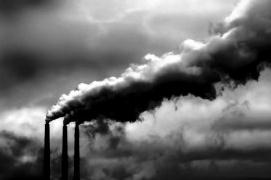 Global Warming Poses No Controversy, Just Facts
Global Warming Poses No Controversy, Just Facts. DiamondBarPatch.com has the
story: "
Controversy rages in the Los Alamitos Unified School District over teaching "both sides" of the global warming "debate," but the scientific foundation for climate change is undeniable. There is no debate that Earth is experiencing climate change; in fact, the 2007 Intergovernmental Panel on Climate Change (IPCC), along with Al Gore, won the Nobel Peace Prize with this conclusion: "Warming of the climate system is unequivocal, as is now evident from observations of increases in global average air and ocean temperatures, widespread melting of snow and ice and rising global average sea level…Most of the observed increase in global average temperatures since the mid-20th century is very likely [>90% chance] due to the observed increase in anthropogenic greenhouse gas concentrations (1)." After reviewing thousands of peer-reviewed studies, the IPCC concluded that global warming is unequivocal and, with more than nine out of ten odds, due mostly due to human-emitted greenhouse gases."
Thoughts On Stupid Things Politicians Say About Climate Change. The one and only Don Shelby has
commentary in Minnpost about the politicians who take special delight flaunting their (willful) ignorance about climate change: "
I once watched a man try to defend himself in court. He wasn't a lawyer. In fact, he wasn't very bright at all — which explains why he thought it was a good idea to represent himself. Cornell University conducted a research project last year and found that some people are so stupid they don't even know they are stupid. The judge was forced to talk to the defendant like the man was a 6th grader. Reporters found it entertaining in a tragi-comic sort of way. I was reminded of this episode as I watched a 10 minute video of a congressional hearing from November last year. It was the Science and Technology Committee hearing on global warming. One of the chief witnesses was Dr. Richard Alley, the Evan Pugh Professor of Geosciences at Penn State, and leading paleo-climate scientist in the world. He thinks, based on his research of ice-core data, among other things, that human-caused global warming is real. Representing himself, the United States and the people of the 46th district of California was Dana Rohrabacher. He is a politician and has never studied ice-core data. Nevertheless, he thinks human-caused global warming is a joke. It was Rohrabacher who brought to mind that guy who thought he was smart enough to tangle with a trained prosecutor. The defendant had watched a lot of Perry Mason, and that gave him certainty. I recognized that Rep. Rohrabacher had read a bunch of material from fossil-fuel funded think tanks. As they say, he was bringing a knife to a gunfight....
I've watched the video of the hearing a dozen times. Initially I found it charming and funny, and now when I watch it I feel frustration and anger. Rohrabacher is charged with making public policy to deal with what has been called the greatest crisis ever to face mankind, and he hasn't a clue about the science. His political beliefs can't square with the science, so he must make the established science wrong, and it is clear that the congressman wouldn't be able to tell a molecule from a mattress. A Minnesota state senator told me that he would give global warming serious attention when the science gets to 50-50. Several separate studies now show more than 97 percent of all published scientists working on global warming agree that increased CO2 from fossil fuels is the primary cause. I told him that the U.S. Department of Defense believes the science, the CIA believes it, and both are already gaming the next set of world conflicts based on the effects of global warming."
Must-See TV. Courtesy of C-Span2 and
Minnpost.com.
Do Arguments Against Climate Change Hold Water? An
editorial from Cape Cod Today that caught my eye: "
In the latest edition of the New Internationalist magazine (May 2011) Danny Chivers, a researcher, activist, and carbon footprint analyst, punches holes in the claims by those who deny that climate change is taking place. He suggests that those who doubt that CO2 is a gas that causes warming might want to observe the BBC's experiment in their two-minute video at news.bbc.co.uk/2/hi/8394168.stm. Caused primarily by human activity, CO2 emissions increase the greenhouse effect that threatens our survival. The roughly 3 percent of published scientists who don't agree that catastrophic climate change is upon us are given an exaggerated voice in the corporate-owned media, conveying the impression that there is a real debate over this issue. The remaining 97 percent agree that there is a link between our behavior and climate change in the same way that scientists established a link between smoking and lung cancer. When scientists tell us that Arctic ice is melting, and melting more rapidly than predicted, the detractors say it is nothing new since Roald Amundsen, the Norwegian explorer, bashed his way through the Northwest Passage more than a hundred years ago. What they ignore is that it took Amundsen three years to do it because he had to winter over in his ship, waiting for ice to melt during the summer. Now this passage is open year round and has become a shipping route. Quite a change! Most of us do not realize that the ocean is also heating up, and heating up faster than the atmosphere. The ocean currents, El Niño and La Niña, can cause air temperatures to shoot up at certain times causing some short-term fluctuations in our "weather." These fluctuations differ from the long-term phenomenon that shows steady gains in global warming. Climate change deniers like to report that rather than melting, glaciers are actually growing in size. This is happening - but only to a small number of glaciers that are in colder areas and that get more snow. This appears to be a contradiction, but what is happening to these particular glaciers is actually caused by the earth's warming."
America's Climate Choice: Put Up Or Shut Up. The New Scientist's S-Word (science of politics) has a
story that is building momentum in Washington D.C.: "
A leading article in the 16 May edition of the Washington Post issues a blunt challenge to candidates lining up for the presidential elections in 2012: on climate change, it is time to put up or shut up. The basis of the newspaper's frank article is a powerful new report published last week by the country's National Academy of Sciences which concluded that climate change is already happening and the United States should rapidly reduce its greenhouse gas emissions by introducing a nationwide carbon price. The report on "America's Climate Choices" was prepared by a panel of leading researchers in response to a request from Congress. It presents a serious challenge to many members of the Senate and House of Representatives, particularly Republicans, who have expressed scepticism and denial about the potential risks posed by climate change. The Post's article calls for: "every candidate for political office in the next cycle, including for president, should be asked whether they disagree with the scientific consensus of America's premier scientific advisory group, as reflected in this report; and if so, on what basis they disagree; and if not, what they propose to do about the rising seas, spreading deserts and intensifying storms that, absent a change in policy, loom on America's horizon."
Climate Triage And The "New Normal". Peter Gleick has the story at the
Huffington Post: "
Triage: the process for sorting victims into groups based on their need for or likely benefit from immediate treatment, when limited resources must be allocated. The delay in acting to reduce the emissions of greenhouse gases means that more and more anthropogenic climate changes are now unavoidable. Climate impacts are already evident and they are going to get worse and worse. It's the "new normal." In coming years, we are going to be faced with increasingly difficult decisions in what must now be called climate triage -- choices about who and what is going to be protected and saved, versus abandoned and lost. The recent decision to open the Morganza spillway and other relief valves on the Mississippi River is a clear example of climate triage. Officials had a difficult choice: intentionally divert part of the Mississippi to flood a 3,000-square-mile area affecting more than 25,000 people, or risk even worse catastrophic flooding in Baton Rouge and New Orleans. Society is going to be faced with more and more such decisions. As sea levels rise, communities will have to make choices about where to build costly seawalls and what coastal properties to completely abandon. As temperatures rise, the poor and elderly will face higher risks of heat deaths if adequate resources to protect them are not made available. Increased flooding on some of the world's major rivers will threaten communities over larger areas, and more frequently, than in the past. Some agricultural lands will have to be abandoned because the climate will no longer be favorable or limited water resources will be diverted to more valuable demands. There has already been talk about "endangered species triage" in California as conflicts over water resources, land management, urban and agricultural priorities, and ecosystem protections grow, with the explicit acknowledgement that climate change will make these conflicts worse."
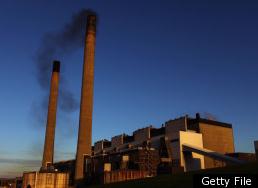 UK Pledges To Cut Carbon Emissions In Half By 2025
UK Pledges To Cut Carbon Emissions In Half By 2025. Very aggressive and impressive - happy to see that a group of competing policians in a western society are capable of tackling greenhouse gas pollution, balancing economic concerns with environmental stewardship. Huffington Post has the
story: "
LONDON (AP) — The British government on Tuesday pledged to cut the country's carbon emissions in half by 2025 – an ambitious target which could be watered down unless other European countries cut their emissions accordingly. Energy Secretary Chris Huhne told Parliament that Britain would reduce the emissions by about 50 percent from benchmark emission levels in 1990, part of its legally mandated commitment to reduce greenhouse gas emissions by 60 percent by 2030, and 80 percent by 2050. Huhne sought to cast the dramatic cuts as a massive boost to the country's green technology companies, telling parliamentarians he was putting Britain "at the leading edge of the global low-carbon revolution." But Britain's energy-intensive industries, such as steel manufacturers, are warning that the country risks making itself uncompetitive unless other European countries follow its lead. They've pressured the government to put in an escape clause which allows for the target to be scrapped as soon as 2014 if Britain's European partners fail to implement their own carbon cuts."
Study Links Climate Change To Changes In Crop Yields. If I were a farmer I'd be keeping up with the trends and long-term impacts on agriculture in a drier, stormier, more extreme climate. Here's a
story from the VOA, the Voice of America: "
A new study says climate change has reduced the world's wheat and maize production. The study says rice and soybean yields have also decreased in some places -- but increased in others. In the words of the researchers: "For soybeans and rice, winners and losers largely balanced out." The researchers studied climate trends and global crop production from between nineteen eighty and two thousand eight. They found that climate changes "are already exerting a considerable drag on yield growth" and may have affected food prices. The study used computer models linking crop yields to weather. Yield is the amount produced for each hectare or acre. The researchers compared the results to what the yields might have been without climate changes. They found that corn production decreased by almost four percent and wheat production decreased by five and a half percent."
Our View: America, Pick Your Climate Choices. A timely
editorial from USA Today: "
One way to deal with a problem is to pretend it doesn't exist. This approach has the virtue of relieving you from having to come up with a solution, spend money or make tough choices. The downside, of course, is that leaky faucets and other problems rarely solve themselves and, in fact, usually get worse if ignored. Such is the case with climate change, a threat that too many members of Congress, most of them Republicans, have decided to manage by denying the science. That head-in-the-sand approach avoids messy discussions of higher energy prices, but it just got harder to justify. Late last week, the nation's pre-eminent scientific advisory group, the National Research Council arm of the National Academy of Sciences, issued a report called "America's Climate Choices." As scientific reports go, its key findings were straightforward and unequivocal: "Climate change is occurring, is very likely caused primarily by human activities, and poses significant risks to humans and the environment." Among those risks in the USA: more intense and frequent heat waves, threats to coastal communities from rising sea levels, and greater drying of the arid Southwest. Coincidentally, USA TODAY's Dan Vergano reported Monday, a statistics journal retracted a federally funded study that had become a touchstone among climate-change deniers. The retraction followed complaints of plagiarism and use of unreliable sources, such as Wikipedia. Taken together, these developments ought to leave the deniers in the same position as the "birthers," who continue to challenge President Obama's American citizenship — a vocal minority that refuses to accept overwhelming evidence."
Wegman Paper Pulled For Plagiarism. Scienceblogs.com has the
post: "
Well, this is exciting: Climate study gets pulled after charges of plagiarism says USA today: "Evidence of plagiarism and complaints about the peer-review process have led a statistics journal to retract a federally funded study that condemned scientific support for global warming... The journal publisher's legal team "has decided to retract the study," said CSDA journal editor Stanley Azen of the University of Southern California, following complaints of plagiarism. A November review by three plagiarism experts of the 2006 congressional report for USA TODAY also concluded that portions contained text from Wikipedia and textbooks. The journal study, co-authored by Wegman student Yasmin Said, detailed part of the congressional report's analysis." Deep Climate has more. [Update: it looks like even more folk are mysteriously finding that the dog has eaten their homework. USA today has a follow-up which contains, amongst other stuff, an attempt to probe the mysteriously quick acceptance - just a few days - of Wegman's paper.By bizarre co-incidence the journal editor, Stanley Azen, was a friend of Wegman. Azen said: "Dear Ed: I personally reviewed your very interesting (and unique) manuscript. I think the paper is very interesting, and I could not identify any errors. So, I am pleased to inform you and your colleagues that your paper "Social Networks of Author-Coauthor Relationships" has been accepted.."
Greener, More Efficient Process Developed To Produce Hydrogen From Natural Gas. Gizmag.com has the
story. The opportunities to cash in on this brave, new (green/energy efficient) world are staggering: "
Hydrogen is certainly one of the big candidates when it comes to finding cleaner fuels to replace petroleum. While it only produces water when burnt as fuel, the process of obtaining hydrogen from natural gas is not quite so eco-friendly – it consumes a lot of energy, and creates carbon dioxide. Now a new process being developed at the Netherlands' Eindhoven University of Technology (TU/e) promises a much more efficient, innocuous alternative. Traditionally, a process known as "steam reforming" is used to produce hydrogen from natural gas. It requires pressures as high as 25 bar (363 psi) and temperatures up to 850 C (1562 F), while also incorporating multistage subsequent separation and purification units. In the post-processing phase, large amounts of CO2 either must be dealt with, or are released into the atmosphere. TU/e's Dr. Mohamed Halabi has created a system called "sorption enhanced catalytic reforming of methane," which uses unique catalyst/sorbent materials instead of steam reforming. The process takes place in a packed bed reactor, with hydrogen being produced on the Rhodium-based catalyst, and the cogenerated CO2 then being absorbed by the Hydrotalcite-based sorbent. This keeps the carbon from escaping into the environment, and results in "high-purity" hydrogen with carbon impurities of less than 100 parts-per-million. The system's fuel conversion efficiency has been measured at 99.5 percent."










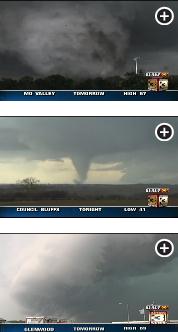
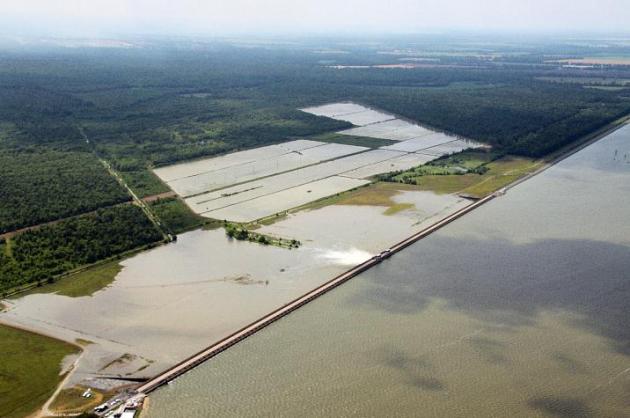

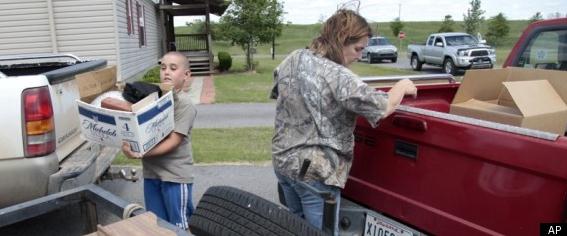
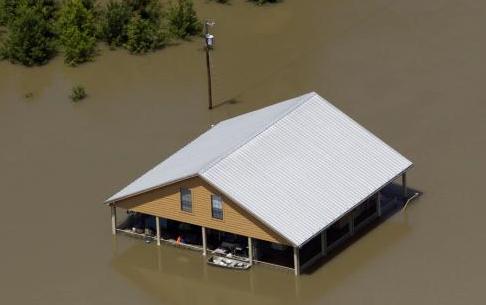
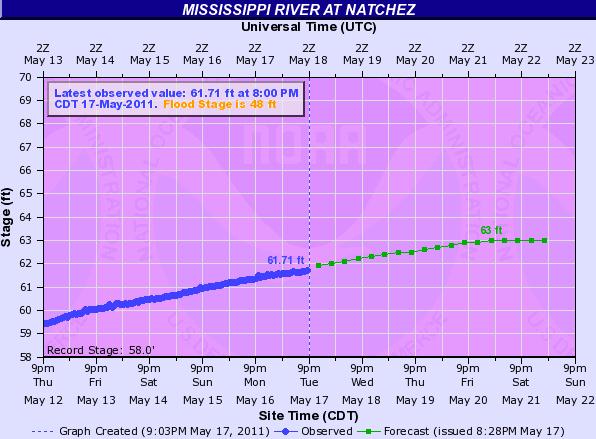



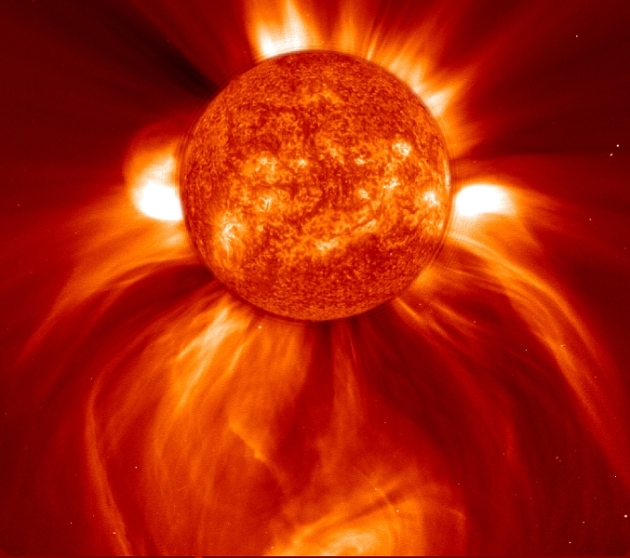
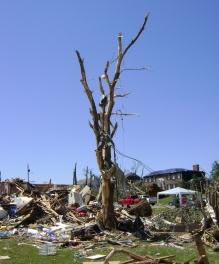
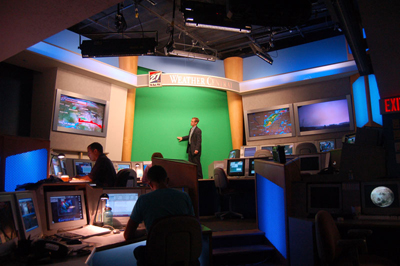




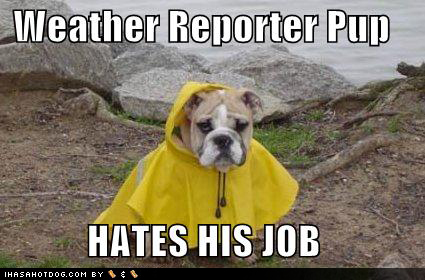
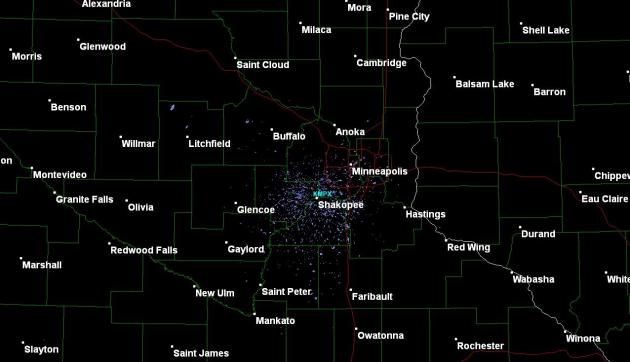






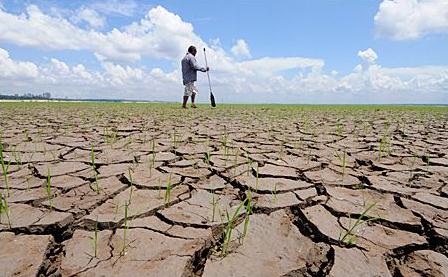

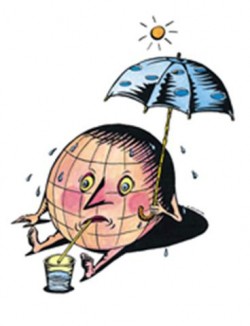
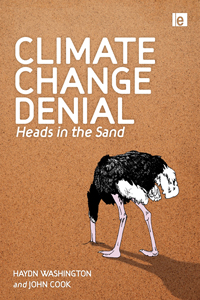
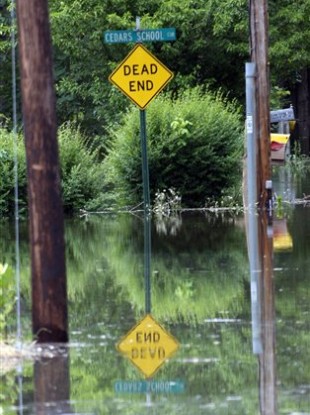





No comments:
Post a Comment